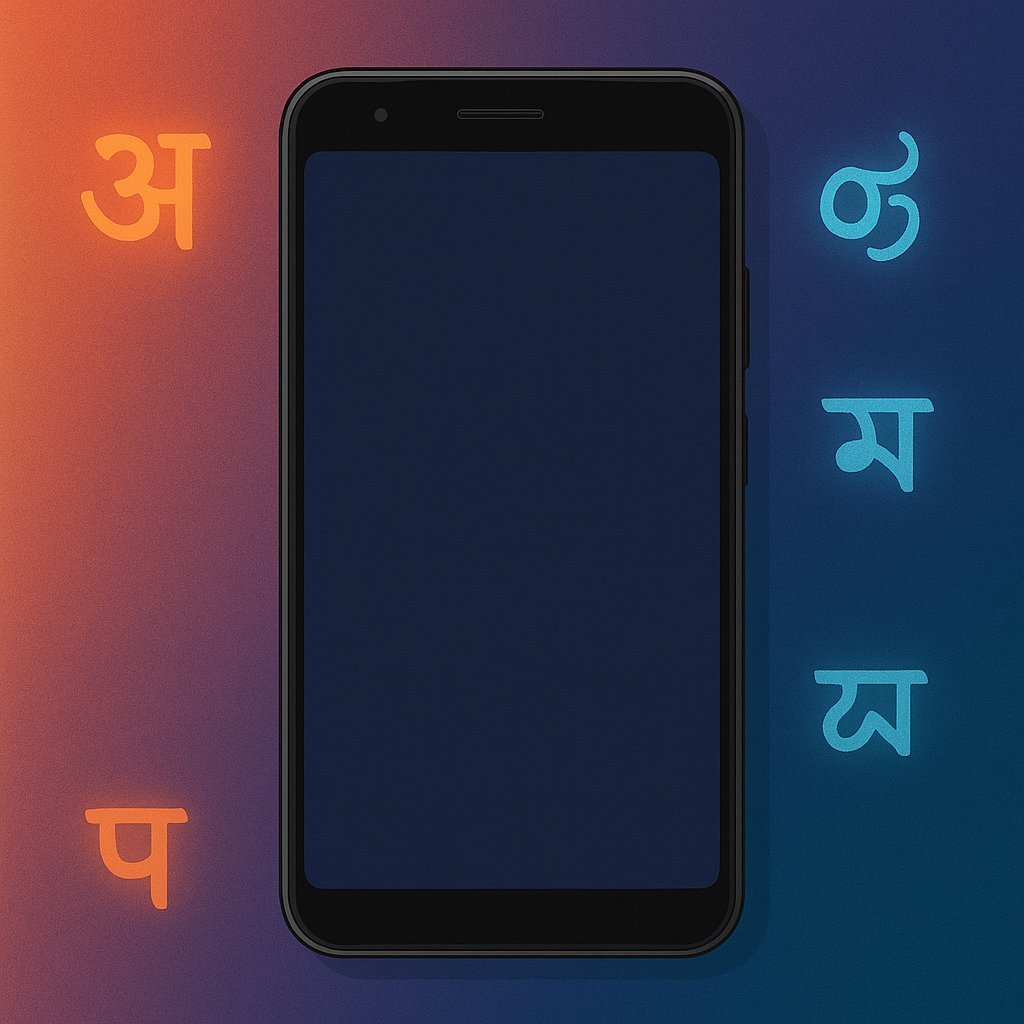India has always been a land of languages, stories, and voices that reflect its diverse cultures. From Hindi and Tamil to Bengali, Marathi, and Malayalam, every language carries a world within it. But for a long time, the internet mostly spoke in English. That is changing fast. Over the past few years, India’s regional languages have stepped into the digital spotlight, reshaping how people read, watch, and connect online. This quiet revolution is rewriting the rules of the internet and creating one of the most exciting chapters in India’s digital story.
The Language of the Next Billion Users
When the internet first took off in India, it was largely confined to English-speaking users; a relatively small percentage of the population. But today, more than 800 million Indians use the internet, and a huge majority of them prefer their native languages. Hindi now ranks among the most-used languages on the web, and regional languages like Tamil, Telugu, Marathi, and Bengali are seeing explosive growth. This shift isn’t just a passing trend; it’s the beginning of a new era. As affordable smartphones and cheaper data plans reach smaller towns and villages, millions of first-time internet users are coming online. They’re not looking for content in English. They want videos, news, entertainment, and learning materials in the languages they grew up with — the languages that make them feel seen and understood.
Regional Language Creators on the Rise
Scroll through YouTube or Instagram today, and you’ll see it clearly: content creators in regional languages are commanding massive audiences. You might find a Telugu comedian pulling in millions of views with relatable skits, a Bengali tech reviewer explaining gadgets in simple language, or a Marathi cooking channel showing home recipes that remind viewers of their childhood. Creators like these are not just entertainers; they’re cultural ambassadors bringing local flavor to digital spaces. What makes them special is their authenticity. They speak directly to audiences who have long been ignored by mainstream English content. For these viewers, hearing their language online creates a sense of belonging. It’s like finding a familiar voice in a noisy world.
The Role of Technology in Breaking Barriers
One of the biggest reasons behind this surge is technology. In the past, typing or reading in Indian scripts was a headache. Fonts were inconsistent, keyboards didn’t support local scripts, and translation tools were unreliable. But things have changed dramatically. Tech giants like Google, Meta, and Microsoft have invested heavily in improving regional language support. Voice typing, AI-powered translations, and predictive text in Indian languages have made it easier than ever to create and consume local content. Even e-commerce and fintech apps now offer full regional language interfaces. A farmer in Madhya Pradesh can use Hindi to manage digital payments, while a homemaker in Kerala can shop online comfortably in Malayalam. Voice search has also become a game-changer. Many first-time internet users skip typing altogether, they simply speak into their phones in their own language. The result? A completely new internet experience that feels natural and intuitive.
News, Education, and Entertainment Going Local
The regional language wave isn’t limited to social media. Online news platforms have seen an incredible transformation. Websites like Dainik Bhaskar (Hindi), Eenadu (Telugu), and Malayala Manorama (Malayalam) have built strong digital presences to serve readers in their preferred languages. Meanwhile, newer digital-only platforms like Inshorts, Dailyhunt, and Koo are making language localization their core strategy.
Education has also embraced this shift. With the National Education Policy (NEP) encouraging learning in mother tongues, edtech companies are creating study materials and video lessons in multiple Indian languages. A student in Assam can now watch a physics lecture in Assamese, while a learner in Tamil Nadu can prepare for competitive exams in Tamil. This inclusivity is opening doors for millions who once felt excluded by the dominance of English-based education resources. Entertainment is another area experiencing this boom. Streaming platforms like Netflix, Amazon Prime Video, and Hotstar now release regional shows and films with subtitles and dubbing in several languages. What’s more interesting is that regional originals, whether it’s a Malayalam thriller or a Tamil romantic drama — are finding fans across India, cutting across linguistic barriers.
Brands and Businesses Catching Up
Where the people go, the brands follow. Marketing in India is being rewritten as companies realize that speaking to customers in their own language builds trust and engagement. A television ad in Kannada or a YouTube promo in Bhojpuri is no longer a niche experiment — it’s a mainstream strategy. From automobile manufacturers to e-commerce platforms, brands are localizing everything from their websites to their customer service chatbots. The idea is simple: language builds connection, and connection builds loyalty. According to marketing studies, customers are far more likely to buy a product if the advertisement speaks their language. In a multilingual nation like India, that insight is gold.
Empowering Local Voices and Economies
Regional language content doesn’t just entertain; it empowers. It allows local storytellers, artisans, and educators to reach audiences far beyond their towns. You’ll find a farmer sharing organic farming tips in Punjabi on YouTube, a Rajasthani folk singer gaining fans worldwide, or a teacher in Odisha running a successful online coaching channel in Odia. This democratization of content has economic benefits too. Rural creators can now monetize their videos, podcasts, and blogs through ad revenue or brand collaborations. Local businesses can promote their services to nearby audiences using affordable digital ads in native languages. The ripple effect of this inclusivity extends far beyond digital screens, it fuels micro-entrepreneurship and supports regional economies.
Challenges That Still Remain
Despite this progress, the journey isn’t entirely smooth. Translating digital interfaces into regional languages isn’t always accurate, and quality control remains a concern. Many Indian languages are rich in dialects, which complicates localization efforts. A Hindi phrase used in Uttar Pradesh may sound different in Rajasthan or Bihar. Monetization in regional content still lags behind English. Advertisers often pay less for non-English markets, even though regional creators attract massive engagement. Addressing this imbalance is essential for sustaining the growth of India’s language-driven digital economy.
Government Initiatives and Policy Push
The Indian government has also recognized the importance of linguistic diversity in the digital era. Through initiatives like Bhashini under the Digital India Mission, efforts are being made to develop language technologies, translation frameworks, and AI-driven speech recognition for Indian languages. The goal is to make the internet truly inclusive, where every citizen, regardless of education or location, can access digital services comfortably in their mother tongue. Such policies are not just about convenience; they’re about empowerment. They ensure that the benefits of digitization reach everyone, not just the urban English-speaking minority.
A Future Written in Many Languages
If you think about it, this transformation is poetic. India’s languages, which have thrived for thousands of years through oral traditions and handwritten manuscripts, are now finding new life in pixels and code. The same folk songs, proverbs, and regional expressions that once echoed in village squares are now trending on digital platforms. In the coming years, regional language content is expected to dominate the Indian internet completely. Reports suggest that nearly 80% of new digital users will prefer non-English content. With advances in AI translation, voice interfaces, and content localization, the language barrier is slowly disappearing.
This future belongs to creators who tell authentic stories, to readers who seek connection, and to brands that respect diversity. It belongs to every person who believes that the internet should speak in their voice, not just a global one.
The rise of regional languages in India’s digital space is not just a technological shift, it’s a cultural awakening. It’s about inclusion, identity, and the celebration of who we are as a nation of many voices. The internet that once felt foreign is becoming more familiar, more Indian, and more human. As millions of new users continue to come online, their voices will shape the next generation of digital India. And these voices, in Tamil, Bengali, Marathi, Hindi, Malayalam, and many more will ensure that India’s digital story is written in every language of its people. Alongside pure regional language content, blogs written in Hinglish — a blend of Hindi and English — are rapidly gaining popularity, connecting younger audiences who think in both languages and prefer a casual, relatable online voice.



